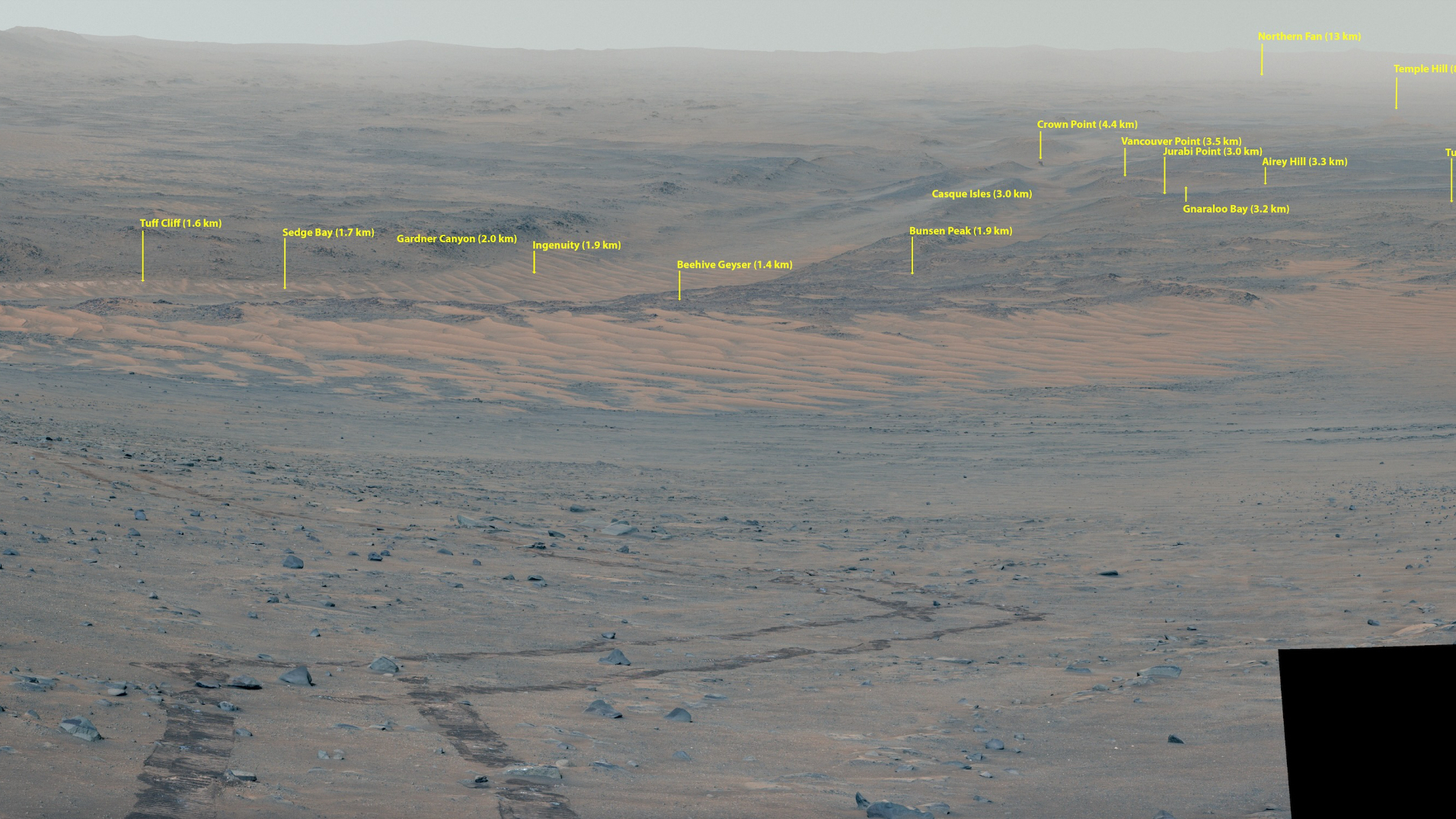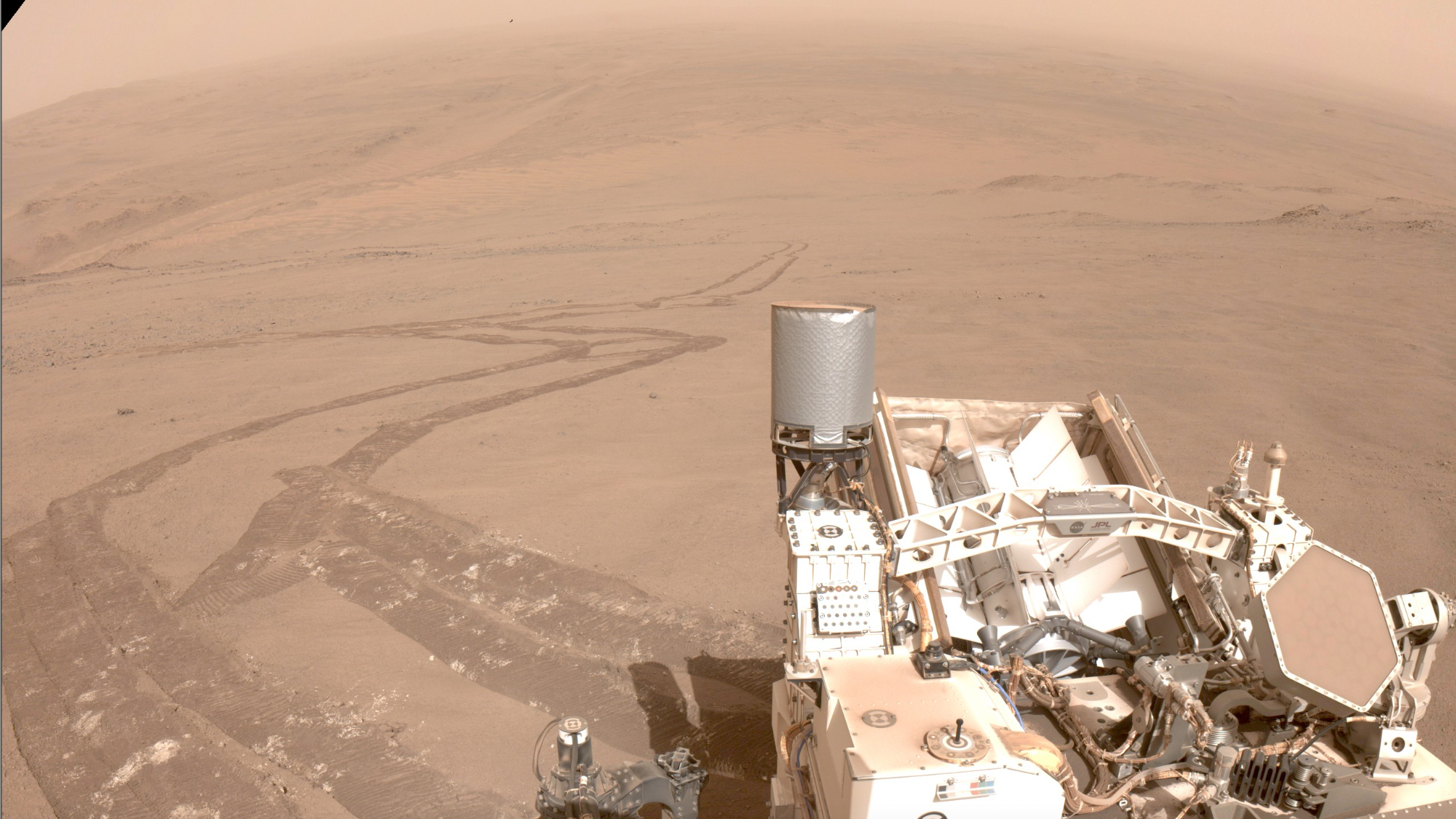NASA’s Perseverance rover took a break from its Mars mountaineering expedition just lately to survey its outdated stomping grounds.
The car-sized Perseverance landed on the ground of the 28-mile-wide (45-kilometer-wide) Jezero Crater in February 2021 to hunt for indicators of previous Mars life and acquire dozens of samples for future return to Earth.
Perseverance has completed its work in Jezero’s flats and is now scaling the crater’s western rim, on its option to discover new and disparate Mars landscapes. Late final month, nonetheless, the rover paused to absorb the grand Jezero view — and to share that vista with its handlers on Earth.
Mission group members stitched collectively 44 photographs that Perseverance snapped on Sept. 27, making a mosaic that options most of the landmarks the rover has explored.
“The picture not solely exhibits our previous and current, but additionally exhibits the largest problem to getting the place we need to be sooner or later,” Perseverance’s deputy mission supervisor, Rick Welch of NASA’s Jet Propulsion Laboratory (JPL) in Southern California, mentioned in an announcement on Monday (Oct. 28), when NASA shared the brand new imagery.
“If you happen to have a look at the proper aspect of the mosaic, you start to get an thought what we’re coping with,” he added. “Mars did not need to make it simple for anybody to get to the highest of this ridge.”
Perseverance started the climb in mid-August. It took the featured photographs when it was about midway up the western rim, close to a spot the mission group calls “Faraway Rock.” The rover is not anticipated to crest the rim till early December, nonetheless, as a result of the going is fairly powerful.
The ridge that Welch referenced has a slope of about 20 levels, NASA officers mentioned. It is also slippery, that includes free sand and mud atop a brittle crust.

“Mars rovers have pushed over steeper terrain, and so they’ve pushed over extra slippery terrain, however that is the primary time one needed to deal with each — and on this scale,” Camden Miller of JPL, a planner, or “driver,” for Perseverance’s mission, mentioned in the identical assertion.
“For each two steps ahead Perseverance takes, we had been taking at the least one step again,” added Miller, who additionally served as a driver for NASA’s Curiosity rover, which landed inside Mars’ Gale Crater in 2012 and remains to be going sturdy. “The rover planners noticed this was trending towards an extended, exhausting slog, so we bought collectively to suppose up some choices.”

These choices included driving the six-wheeled Perseverance backwards, taking a switchback-heavy “cross-slope” strategy, and staying near the slope’s northern edges, which can have extra massive, traction-enhancing rocks buried within the close to subsurface.
All three of those methods have helped to some extent, however the northern-edge methodology seems to offer probably the most bang for the buck, so the rover group goes to prioritize that one.
“That is the plan proper now, however we could have to alter issues up the street,” Miller mentioned. “No Mars rover mission has tried to climb up a mountain this large this quick. The science group desires to get to the highest of the crater rim as quickly as potential due to the scientific alternatives up there. It is as much as us rover planners to determine a option to get them there.”





